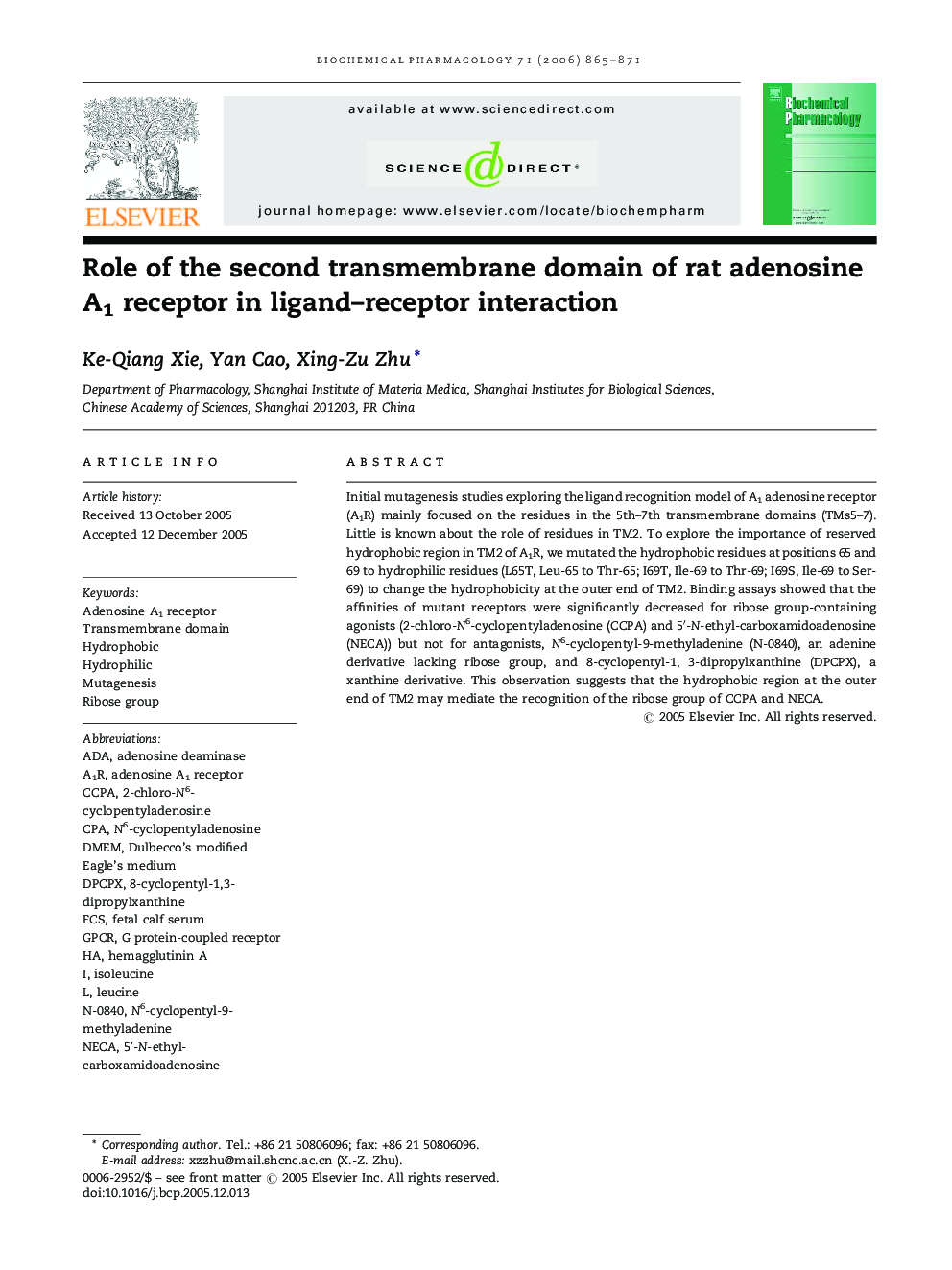| Article ID | Journal | Published Year | Pages | File Type |
|---|---|---|---|---|
| 2515592 | Biochemical Pharmacology | 2006 | 7 Pages |
Initial mutagenesis studies exploring the ligand recognition model of A1 adenosine receptor (A1R) mainly focused on the residues in the 5th–7th transmembrane domains (TMs5–7). Little is known about the role of residues in TM2. To explore the importance of reserved hydrophobic region in TM2 of A1R, we mutated the hydrophobic residues at positions 65 and 69 to hydrophilic residues (L65T, Leu-65 to Thr-65; I69T, Ile-69 to Thr-69; I69S, Ile-69 to Ser-69) to change the hydrophobicity at the outer end of TM2. Binding assays showed that the affinities of mutant receptors were significantly decreased for ribose group-containing agonists (2-chloro-N6-cyclopentyladenosine (CCPA) and 5′-N-ethyl-carboxamidoadenosine (NECA)) but not for antagonists, N6-cyclopentyl-9-methyladenine (N-0840), an adenine derivative lacking ribose group, and 8-cyclopentyl-1, 3-dipropylxanthine (DPCPX), a xanthine derivative. This observation suggests that the hydrophobic region at the outer end of TM2 may mediate the recognition of the ribose group of CCPA and NECA.
